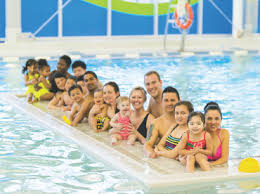In a country surrounded by beaches, dotted with rivers, and full of backyard pools, understanding what makes water safe isn’t just helpful—it’s essential. Whether you’re learning to swim, supervising children, or teaching aquatic skills professionally, safety always starts with recognising the environment.
So, what are 3 characteristics of safe water? It’s not just about clear surfaces and calm tides. True water safety considers physical conditions, visibility, and access to support. And it’s exactly what a certified water safety course teaches in detail.
This article dives into the top three markers of safe water environments and why knowing them can help prevent injuries and save lives.
1. Good Visibility
Clear, clean water where you can see the bottom or at least gauge its depth is a major safety indicator. Poor visibility can conceal hazards like sharp objects, sudden drop-offs, or submerged debris. In open water, murky or muddy conditions can increase the risk of entrapment and disorientation.
Why it matters:
- Swimmers can avoid unexpected changes in depth
- Supervisors can monitor swimmers more easily
- Rescuers can locate people quickly in an emergency
In pools, proper filtration and maintenance are key. In natural water, stick to areas with clearer water and avoid swimming after heavy rain, which can stir up silt and reduce visibility.
Tip: Avoid swimming in water that appears cloudy, green, or filled with debris. According to the NSW Government’s water safety advice, these conditions can increase risk, particularly for children and weaker swimmers.
2. Stable and Predictable Conditions
Safe water behaves in a way that swimmers—especially beginners—can understand and respond to. Unpredictable or rapidly changing environments, like surf beaches or fast-moving rivers, pose serious risks even for confident swimmers.
Look for:
- Still or gently flowing water in rivers and lakes
- Calm wave conditions in coastal areas
- No sudden currents or rip tides
- Clearly marked depth signage and hazard warnings
In a pool environment, predictability means water of consistent depth, well-maintained temperature, and no suction hazards around outlets or drains.
In outdoor settings, conditions can shift quickly due to tides, wind, or rainfall. Always check for posted safety warnings and ask locals if you’re unsure about water behaviour in a particular spot.
3. Supervised and Controlled Environment
Perhaps the most overlooked—but vital—feature of safe water is the presence of trained supervision or accessible help. No matter how calm or clear the water appears, an emergency can happen in seconds. A safe location has systems in place to respond quickly.
Examples include:
- Lifeguard presence at public pools and patrolled beaches
- Emergency rescue equipment, like flotation devices or life rings
- Clear rules and signage outlining behaviour, risks, and safety zones
- Designated swim areas, especially in open water or campgrounds
Supervised environments reduce the risk of undetected distress, especially in children or novice swimmers. They also provide instant support in an emergency, which dramatically improves outcomes.
This principle is also why the first lesson in any water safety course is about active supervision—not just by professionals, but by parents, carers, and group leaders.
A Real-World Example: Why It Matters
During a family holiday in South Australia, nine-year-old Ethan was playing near a riverbank when he slipped on wet rocks and fell in. The current was stronger than expected, and the water was muddy with limited visibility.
His older cousin, trained in a recent water safety course, knew the water wasn’t considered “safe” for play—there were no signs, no supervision, and no clear footing. But because his family had discussed water safety beforehand, they were nearby, saw the fall, and pulled Ethan to safety within seconds.
That scenario could’ve gone differently. But by recognising the risks and being prepared, a crisis was averted.
Why Understanding Safe Water Matters for Everyone
You don’t have to be a lifeguard or swim teacher to need this knowledge. Recognising safe water environments is useful for:
- Parents, supervising backyard or holiday swimming
- Teachers and carers, managing group excursions or sports days
- Coaches, overseeing aquatic training or water-based fitness
- Teens and young adults, who often take greater risks near water
- Adults, particularly those returning to swimming after years away
Even confident swimmers are vulnerable in unsafe environments. That’s why every swim instructor is trained to assess not just skill—but the water itself.
What a Water Safety Course Covers
In a certified water safety course, you don’t just learn how to teach a stroke—you learn how to assess an environment. Safety modules cover:
- Identifying risk factors in pools, lakes, beaches, and rivers
- Understanding how water behaves in different conditions
- Planning safe entry and exit points
- Using equipment like throw ropes and flotation aids
- Supervising individuals and groups with different confidence levels
Whether you’re teaching five-year-olds to float or leading a school swimming carnival, these skills help create safe, supportive water environments.
Final Thoughts
So—what are 3 characteristics of safe water? It’s more than just calm and clear. True safety is about visibility, predictable conditions, and supervision or support. When all three come together, they create an environment where learning and fun can happen without unnecessary risk.
And the best way to recognise, assess, and teach these characteristics? Start with a structured, nationally recognised water safety course. Because safety isn’t just a precaution—it’s the foundation of every confident swimmer.

